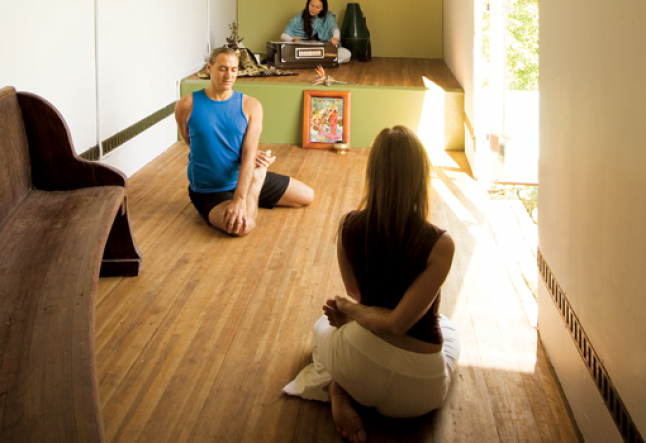fabulous prefabricated houses

Sustainable home right out of the box
When creating the perfect home, gifted designers often choose the simplest route. Architect Jennifer Siegal bought her home in 2002, a deceased estate that had not been upgraded in over fifty years.
By all accounts, it was a 1920s stucco box totaling 800 sq ft, but when she looked at the square fasade, she immediately saw the opportunity to create something beautiful – not by changing the home’s character, but by encouraging its inherent potential.
Inside it was a dark rabbit warren of walls and tight, compact spaces, dust catching and highly inefficient jalousie windows, filthy old carpet reminiscent of the less glamorous aspects of the 1970s and outside a yard, left dead and untended.
Clearly, the building gasped its last breath with the previous occupant. The advantage of having a design eye, however, was Jennifer’s ability to see the possibilities, which all but screamed at her.
Demolishing as many walls as possible, she created an open floor plan, adding more and larger windows. She replaced the front door with a custom-designed steel-framed translucent glass door which while maintaining privacy admits a soft, soothing light.
Large double-doors, pivoting in either direction – recycled from a grocery store – were placed as back doors.
Now with the open floor plan, increased windows and glass doors, the home takes advantage of natural day lighting and sea breezes, which create a passive ventilation loop, replacing the need for A/C or artificial cooling system.
The carpet was replaced with bamboo, an easily renewable wood source secured from Smith and Fung, a favorite company that specializes in renewable woods such as bamboo and palm species.
Much of the furniture is recycled mid-century modern, which feature coarse textures and dark woods.
Perhaps the most noteworthy feature of the home is the 200 sq ft addition. Attached to the house in the back is an old trucking trailer.
As stories go, her client’s father owned a brewery downtown with lots of materials lying around, including many old truck trailers.
Seeing the potential, she bought it for a mere $1500, had it towed to Venice, and hired a crane and crew to put it in place behind the house.
The second phase of the remodel was adding a connecter between the trailer and the original structure, which became the master bath and laundry room.
She replaced the two metal side-door panels of the trailer with large steel-framed glass doors, which open wide to expose the garden.
Open from floor to ceiling with sanded, original mahogany floors, it is the perfect space for yoga and meditation.
For the most part, Jennifer merely restored the trailer’s original character. It sits now as an eloquent example of the principle of reuse.
Jennifer Siegal is clearly attracted to innovation. Her firm, OMD (Office of Mobile Design) has developed two types of prefabricated systems to streamline the process of building.
The first takes steel-framed modules which may be combined in unlimited configurations to create a custom design for the client. The modules are built in the factory, independent of one another, and transported to the site. A two-story house may be split into as many as four or eight pieces. The benefits of this system are worth detailing.
The quality of the craftsmanship is higher than conventional on-site framed houses, because work is done at eye level in a controlled environment, as opposed to on-site where builders must battle weather and dangerous heights.
Employees enjoy a better working environment and tend to live locally, reducing the amount of fossil fuel required to travel to work. All scrap materials are either recycled or reused, reducing landfill.
The factory is local, usually less than one hour from the site, and the home is transported in on trip to the site and erected within one week. All things considered, it is a more efficient process for building.
The steel framed buildings are stronger and able to withstand greater earthquake or racking wind loads than a traditional wood frame or concrete block construction, as well as being more fire resistant.
The other method that OMD employs is a panelized system or SIP panel construction (structured insulated panel). This replaces conventional two-by-four, insulation and dry wall construction, and is made with two skins of OSB (oriented strand board) with Styrofoam sandwiched in between.
The panels are constructed and pre-channeled in the factory (to run the electrical), shipped flat and essentially snap together on site. At $225-250 per sq ft, both methods offer high-end custom houses at half the price of conventional modern construction.
OMD can work with most any parcel of land. Ideally utilities should be on site, but Jennifer’s office navigates around any issue and handles all of the permitting requirements from conception to turnkey.
Whether green by reuse or green by construction, what is apparent is that there are many methods and modalities for being green, gifted designers have lead the path for us.